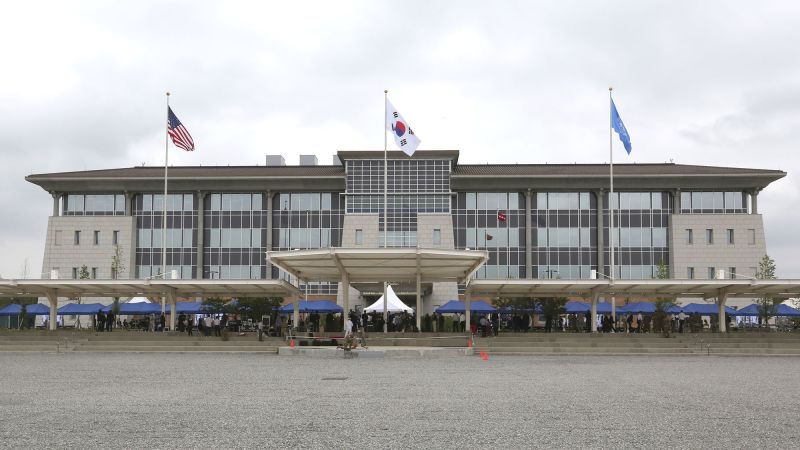The US and South Korea have reached a new five-year cost-sharing agreement for US forces based in South Korea, safeguarding the long-running alliance ahead of a potential victory by former President Donald Trump in November. Negotiations over the Special Measures Agreement strained the alliance during the Trump administration, with the former president demanding Seoul pay up to 400% more for the presence of US troops. The new agreement, set to come into effect in 2026 and last until 2030, would see South Korea contributing KRW ($1.13 billion) to the cost of stationing US troops in Korea, representing an 8.3% increase over 2025.
The agreement was reached after eight rounds of negotiations, with advocates arguing that a significant US troop presence in the Korean Peninsula is crucial to strengthening the alliance between the two countries. The troops are seen as essential to deterring potential attacks from North Korea and countering China’s aggression in the region. There was urgency on the Korean side to complete the deal before the end of the year to avoid criticism from Trump, should he win the election in November. Under the current agreement, South Korea pays about $1 billion annually, representing a 13.9% increase over previous SMAs.
The Trump administration had initially asked South Korea to pay $4.7 billion a year during negotiations, a demand that State and Defense Department officials struggled to justify. Trump later commented that he did not think South Korea was paying enough based on the last agreement. With the Biden administration in office, the terms of the agreement were renegotiated, bringing the cost back down to previous levels. Some former US officials have warned South Korea not to rush towards an agreement, fearing backlash from Trump if he returns to the White House.
The new agreement has to be approved by South Korea’s national assembly, which is controlled by the opposition party to President Yoon Suk Yeol. The US Congress has no role in finalizing the deal on the American side. The presence of US troops in South Korea is seen as critical to regional stability, with North Korea continuing to build its nuclear arsenal and tensions with China escalating. The deal was reached in anticipation of a potential second Trump administration and to avoid any further strain on the US-South Korea alliance.
Overall, the new agreement reflects a compromise between the US and South Korea, with both sides recognizing the importance of maintaining a strong alliance. The negotiations were driven by the need to secure the future of the US forces in South Korea and address potential threats from North Korea and China. With the deal set to last until 2030, both countries can focus on strengthening their partnership and addressing regional security challenges. Time will tell how the agreement impacts the broader geopolitical landscape and the dynamics between the US, South Korea, and their adversaries.


